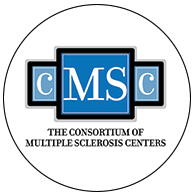A team of researchers suggested thatcigarette smoking is associated with adverse effects to white matter in the brain, and reported that smoking may underlie the clinical course of clinically isolated syndrome, an early and potentially predictive symptom of a progression to multiple sclerosis (MS).
The study, “Influence of cigarette smoking on white matter in patients with clinically isolated syndrome as detected by diffusion tensor imaging,” was published in the Diagnostic and Interventional Radiology journal.
Cigarette smoking is one of the environmental risk factors associated with increased occurrence of MS, even in passive smokers, together with worsening clinical disability and faster disease progression.
Clinically isolated syndrome is an inflammatory demyelinating disorder of the central nervous system, and the first clinical episode predicting the possible occurrence of MS. MS, a disabling disease of the central nervous system, is characterized by damage to the myelin coating around nerve fibers, which disrupts transmission of nerve signals between the brain, spinal cord, and the rest of the body.
Researchers investigated the effects of smoking on white matter in patients with clinically isolated syndrome using diffusion tensor imaging, a technique that allows evaluating white matters’ tissue integrity. To this end, the team analyzed smoking patients with clinically isolated syndrome (n=16), healthy controls who smoke (n=13), nonsmoking patients with clinically isolated syndrome (n=17), and nonsmoking healthy controls (n=14). All patients fulfilled the McDonald diagnostic criteria for MS, but registered only one clinical episode involving optic neuritis, cervical and/or thoracic myelitis, or brainstem/cerebellar syndrome.
The team scanned 13 regions of interest (including nonenhancing T1 hypointense lesion and perilesional white matter), and 11 normal-appearing white matter regions.
Researchers found a tendency for greater lesion load in smoking patients. When compared to healthy smokers, smokers with clinically isolated syndrome showed more, and more extensive, normal-appearing white matter changes, denoted by increased mean diffusivity. However, no relationship was found between diffusion metrics and clinical disability scores, duration of the disease, and degree of smoking exposure.
In conclusion, results suggested that patients who smoke may have a tendency toward a greater number of white matter lesions, and exhibit significantly more extensive normal-appearing white matter abnormalities, as detected by diffusion tensor imaging.












